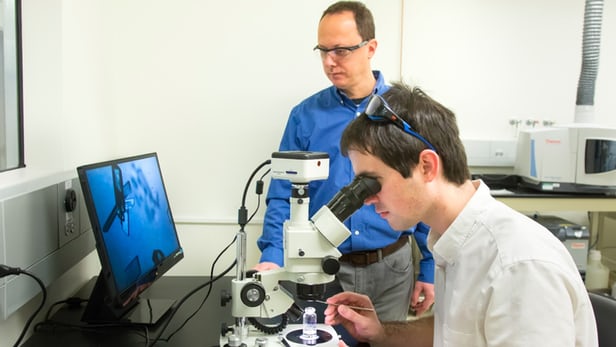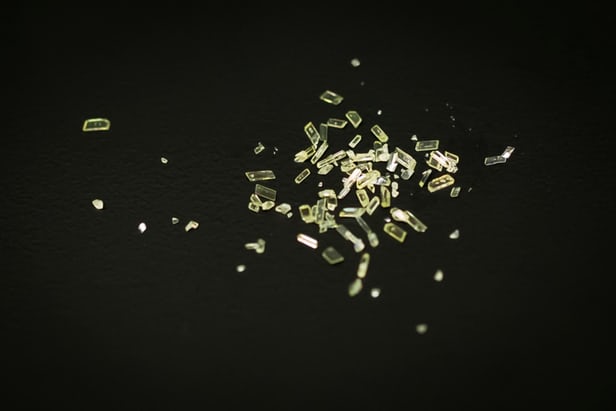Crystals of CO2 drawn from the air

Researchers Radu Custelcean (top) and Charles Seipp study crystals that had absorbed carbon dioxide from ambient air(Credit: ORNL)
When we hear about carbon capture technology, it typically takes the form of sponge-like materials that are used to trap excess carbon dioxide at the places it is released, such as industrial smoke stacks. Scientists from the US Department of Energy's Oak Ridge National Laboratory, however, have created a means of drawing it right out of the ambient air – and the technology involves using a liquid to turn the CO2 gas into crystals.
The researchers started out investigating methods of removing environmental contaminants such as sulfate, chromate and phosphate from water. In order to so, they synthesized a compound known as guanidine. It binds with such pollutants, forming insoluble crystals that can subsequently be removed from the water.
However, they also discovered that when an aqueous solution of guanidine was left open to the air, it drew CO2 from that air and converted it into prism-like carbonate crystals.


In most carbon-capture scenarios, the captured CO2 needs to be converted back into a gas, so it can be piped into underground storage reservoirs. In some cases, this involves heating it as high as 900 ºC (1,652 ºF) – this obviously requires a lot of energy, potentially creating as much CO2 as has been captured. The guanidine crystals, though, only need to be heated to 80-120 ºC (176-248 ºF) – the scientists are looking into using solar energy as the heat source.
This heating turns the captured carbon back into a gas that can be piped away, and returns the guanidine to its liquid form. It can then be reused, to capture more carbon dioxide.
A paper on the research was recently published in the journal Angewandte Chemie International Edition.
Source: Oak Ridge National Laboratory
